Best TV for gaming in 2024: TVs for PS5, Xbox Series X, PCs and more
These are the best gaming TVs for PS5 and Xbox Series X
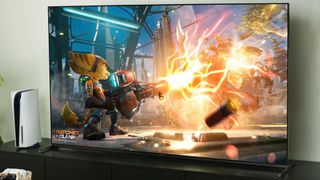
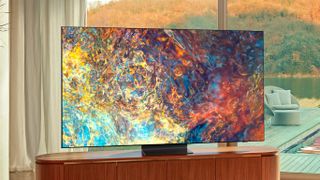
1. The list in brief
2. Best gaming TV
3. Best budget gaming TV
4. Best gaming value
5. Best Mini-LED TV
6. Best 144Hz gaming TV
7. Best 8K gaming TV
8. How to choose
9. How we test
10. How to set up a gaming TV
To get the best seat in the house for all things gaming, you'll need to have one of the best TVs for gaming and it's quite a flooded market as of yet. Advanced features, like Auto Low Latency (ALLM) and Variable Refresh Rate (VRR) are utter must-haves, plus you'll want to look out for displays with at least two HDMI 2.1 inputs, but four is the sweet spot among best HDMI 2.1 TVs.
Games run the gamut on variety, of course. There's the fast-paced action born of the PS5 exclusive Stellar Blade, and the jaw-dropping wonder of exploration apparent within Elden Ring: Shadow of the Erdtree, which means you'll need one of the best TVs for gaming that offers simple access to the best viewing experience across the board.
When searching for a gaming TV, you'll also want to consider if you'll be playing primarily on a console, like the Xbox Series X, or one of the best gaming PCs. You'll also want to look into what type of TV panel to game on. OLED TVs typically come highly regarded as arguably the best gaming TVs, but Mini-LED options are on the rise and prove far more cost effective.
We've got loads of experience testing TVs, the best gaming monitors, and so much more. With our years of reviews under our belts, we definitely know where to find the best seat in the house for gaming. That being said, let's net you the perfect win among the best gaming TVs so you can experience the pastime in its most ideal form.
The quick list
Here's a quick overview of the best gaming TVs you can buy right now based on our testing and reviews. And keep up on scrolling if you want to see our in-depth analysis of all the top TVs for every budget.
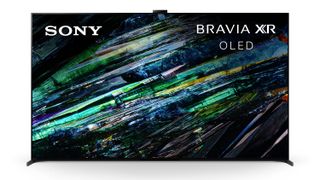
It's hard to beat Sony at one of it's best games: gaming. The Sony A95L QD-OLED is that big ticket entry into a world of wonder in your living room, with a multitude of specs tailored to the pastime, and PS5-centric features that make it the best display companion for the platform.
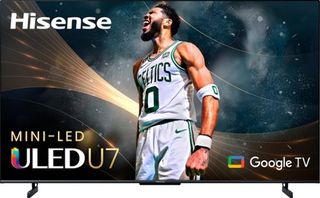
The Hisense U7K is a truly remarkable TV with loads of awesome features that make it a worthy gaming companion, like Dolby Vision Gaming and AMD FreeSync Premium Pro. Plus, at just $800, you can't go wrong with this set.
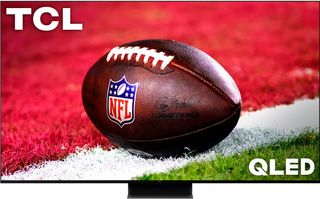
A brilliantly bright TV that can deal with tons of ambient light. At just around $900, the TCL QM8 is a steal for those looking to get ample gaming potential without the high premium. It also comes equipped with several major gaming enhancements, like VRR, ALLM and an input lag of 13ms.
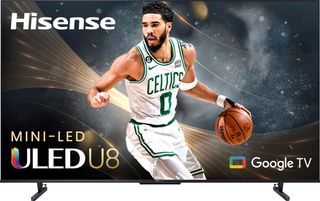
Believe the hype — the Hisense U8K offers excellent performance. At a slimmed-down price of a little over $1,000, the U8K is a hard bargain to pass up, especially when it offers a suite of amazing gaming-centric features, like 4 HDMI 2.1 inputs, a 2.1.2 channel speaker, and an ATSC 3.0 tuner.
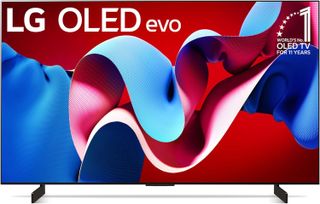
Back on its pedestal, the LG C4 OLED easily takes up after last year's model delivering exceptional gaming performance. A 144Hz refresh rate gives it an added boost for those looking to take their gaming higher and you just can't beat that OLED display.
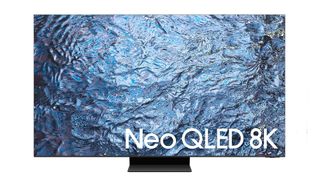
Say hello to the new peak brightness king. This 8K beast is a beaut of an experience, leveraging 4 total HDMI 2.1 inputs for seemingly unlimited gaming potential in tandem with a 9.6ms input lag for arguably the best first person shooter experience at 4K/120fps (or even 8K/60fps). You'll be paying for it, though, with an astronomical price tag of $3,797 — a high price to pay for one of the best gaming TVs.
The full list: Best gaming TVs in detail
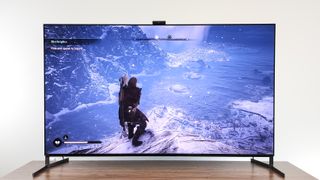
Specifications
Reasons to buy
Reasons to avoid
What better way to experience gaming than on one of the very best TVs in the market period — one that was made by arguably among the most influential pioneers of gaming itself? The Sony A95L OLED is a remarkable display, one that comes with a suite of enhancements tailored specifically to the PlayStation 5 gamers out there, which according to IGN is beating out the Xbox Series X/S by as much as 3 to 1.
Via Sony’s A95L, users get a swath of well-balanced features, including incredible HDR and sound potentials, an ATSC 3.0 tuner (a welcome addition on this display), and probably the most gorgeous picture quality on the block. The Sony A95L QD-OLED is, after all, a PS5 companion piece, leveraging a Game Menu for all of your various settings, like Variable Refresh Rate (VRR) and Motion Blue reduction.
It’s definitely not a steal though, as this QD-OLED TV comes with the hefty price tag of nearly $2,500 just for the 55-inch model. But you’re getting some incredible — if not probably the best — TV technology and it will elevate your gaming experiences without question.
Read our full Sony Bravia XR A95L QD-OLED.
best budget gaming TV
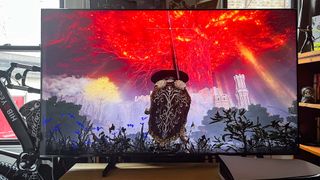
Specifications
Reasons to buy
Reasons to avoid
From the color-drenched Lands Between of “Elden Ring” to the fast-paced gun-toting arena shooter of “Modern Warfare 3,” the Hisense U7K Mini-LED TV holds up as one of the best TVs for gaming and proves you don’t have to spend an exorbitant amount of money to do it right.
The Hisense U7K might be missing Nvidia’s G-Sync, but it does come equipped with AMD FreeSync Premium Pro for stellar screen tearing coverage, and a 13.2ms input lag is pretty stellar, too. The fast paced, over 70 fps mech action of “Armored Core VI: Fires of Rubicon” looks incredible on this display, thanks in large part to the U7K’s onboard Dolby Vision Gaming, which amplifies color, contrast, and brightness on HDR games for real immersion.
In a class of its own, thanks to an incredible price of just $800 for its 65-inch model, the Hisense U7K Mini-LED is not only a gaming powerhouse but a true bargain that meets most TV buyers’ needs. Both PC gaming and PS5 titles stun on this display, and no matter where you play you’ll get ample coverage that’s rarely if ever muddled or desaturated, let alone limited frame rates.
It’s even got a handy gaming bar, which allows you to swiftly alter a variety of settings on the fly, like toggling VRR or adding an fps counter to the top of the screen. It might not reach the same lengths of LG’s or Samsung’s game bar, but the U7K is an apt display for its price and won’t leave you in a rut when it comes to fast-paced, colorful action.
Read our full Hisense U7K Mini-LED TV review.
Best value gaming TV
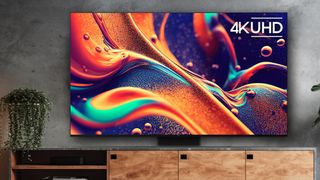
Specifications
Reasons to buy
Reasons to avoid
Gaming on a budget? Meet the TCL QM8 Mini-LED TV. It’s quite a remarkable display at the perfect price point of around $900 for its 65-inch model. Although it doesn’t pack the greatest speaker system within, it still proves to be one of the brightest TVs we’ve tested and has a variety of gaming-centric features that let it stand out over the competition.
The TCL QM8 doesn’t hit quite the same level as the Hisense U8K, but it still works at a phenomenal rate, especially with a color coverage of 97.2% on the UHDA-P3 gamut in tandem with around 1,348 nits of peak brightness (specifically in Movie mode). An input lag of 13ms is a serviceable bar for gaming, especially at this price point, and the addition of 2 HDMI 2.1 inputs is great for those who might have two different systems and want to use ALLM and VRR.
That’s not all, either, as the TCL QM8 also comes equipped with several interesting gaming quirks, like a screenshot feature, crosshair, and a variety of picture presets for the most optimal playability. Want to game on one of the best PCs at 240Hz at 1080p without dropping over $1,000 for a display? This is the gaming cohort for you.
Read our full TCL QM8 Mini-LED TV review.
Best mini-LED gaming TV
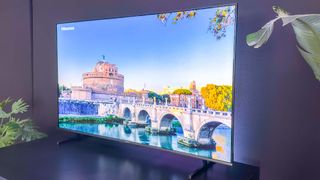
Specifications
Reasons to buy
Reasons to avoid
Much like LG’s C3 OLED, the Hisense U8K mini-LED TV is a steal of a gaming display. As of writing, prices sit at around $700 for the 65-inch model, making this a superb value as it rakes in a ton of sweet features. You can’t go wrong with a built-in ATSC 3.0 tuner, and both sound and colors on the Hisense U8K are outstanding.
But, what about gaming? Well, at 13.2ms, its input latency is quite serviceable, but certainly could be better. It has a total of 4 HDMI 2.1 inputs, more than enough I/O for all the gamers out there, and a 2.1.2 channel speaker system for arguably one of the best sound profiles on this list. It certainly has its drawbacks, but the U8K still outperforms most TVs due to its brightness, colors, and contrast ratios — plus, you just can’t beat that price point.
Read our full Hisense U8K Mini-LED TV review.
Best 144Hz TV
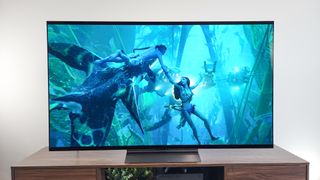
Specifications
Reasons to buy
Reasons to avoid
The hot new addition in town takes up after last year's most value pick and it's hard not to love both options in their own way. The LG C4 OLED, a relatively expensive new option among the best gaming TVs, provides ample coverage across all bases when it comes to the pastime. Plus, with its 144Hz capabilities, the C4 is the big ticket to the gaming scene — if only a bit out of reach for most buyers.
What allows the LG C4 OLED to stand out the most is its 9.2ms input lag in Boost mode. This makes first person shooters all the more responsive and lets you play at a breakneck pace. You're also getting some serious HDR brightness at 1049 nits, made all the better thanks to its 1.8201 Delta-E color volume. Games like Elden Ring and Rise of the Ronin will look breathtaking on the C4.
It's not among the best TVs for nothing. But do expect to pay quite a high premium at $2,699 for its 65-inch model. At least you get four total HDMI 2.1 inputs for extra coverage on all things gaming.
Read our full LG OLED C4 review.
The best 8K gaming TV
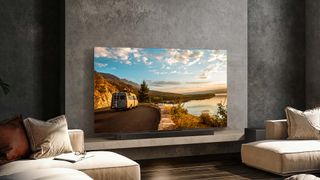

Specifications
Reasons to buy
Reasons to avoid
As one of the most expensive TVs on this list, the Samsung QN900C certainly pulls out all the stops and doesn’t waste any of its resources. It’s marked as the brightest TV for gaming specifically and has four total HDMI 2.1 inputs via its One Connect box, which allows it to essentially be a wireless TV.
The Samsung QN900C 8K is, as the name suggests, also one of the very few TV models that can allow up to 8K 60fps support when that potential actually arises. For now, users can experience buttery-smooth 4K/120fps gaming without breaking a sweat — though, maybe you will after seeing its $3,797 price tag.
As one of the most premium TVs on the block, it’s no surprise the QN900C is incredible expensive, but you’re getting quite a lot out of it, most notably 9.6ms of input lag and an ultrawide viewing angle mode for PC gamers, as well as all of the assorted options presented within Samsung’s Game Mode.
Read our full Samsung QN900C 8K QLED TV review.
How to choose the best gaming TV for you
How to choose the best gaming TV for you
Why you can trust Tom's Guide
When it comes to picking the best 4K gaming TV, there are several factors to consider. While the advice in articles like Everything you need to know about buying a TV offer a one-size fits all approach for most TV shoppers, there are some factors that gamers need to consider differently.
Refresh rate: You'll want to check the TV's frame rate, often listed as the refresh rate. Most current TVs will offer a 60Hz refresh rate, which means that the TV refreshes the picture 60 times per second. Given that most current consoles and games top out at 60 frames per second, this is an ideal match. However, the latest systems demand better, with the next-gen PS5 and Xbox Series X consoles offering frame rates up to 120Hz. If you want a TV that will handle next gen gaming, you'll need something that supports 120Hz, as well. However, do bear in mind that not everything you read about refresh rates is true — so check out our TV refresh rates: How to see through the TV industry's biggest lie article for more info.
Lag time: The other major aspect of a good gaming TV is lag time, which encompasses the interval between an image or button press registering on the console and the resulting change displaying on screen. Measured in milliseconds, we recommend sticking to less than 30 millisecond lag times for any gaming, but more competitive gamers will want to find sets with lag times shorter than 20 milliseconds for the best performance.
Screen size: Size is another element to consider. A larger TV will fill your field of vision, making for a more immersive gaming experience. Just don't go too big; you want to be able to clearly see everything on the screen. Our guide answers the old question: What size TV do I need?
Design: One additional point to consider is the physical design of the TV. The thinner the set's bezels, the more immersive gaming and picture will be. Port placement will also be a significant factor is you need to disconnect your game system with any regularity - some TVs have easily accessible connections, but others do not, and your own setup will vary depending upon whether or not you choose to wall-mount your TV.
Smart features: Don't skimp on smart features if you plan to use your new TV outside of gaming. Smart TVs let you use your favorite apps and streaming services, mirror content from your phone or tablet, and provide a blend of online and over-the-air options for cord-cutters.
Price: Budgets play a pretty important role in people's decision making, which is why we include TVs that will support gaming for less than $500. These affordable options prove that you can get a great TV for 4K gaming without spending more than you paid for the console itself. Save a few bucks and go buy the game you really want to enjoy.
How we test the best gaming TVs
How we test the best gaming TVs
We put every TV we review through a series of benchmark tests to measure different aspects of performance, like color accuracy, brightness, lag times and more. We use the results to supplement anecdotal impressions gathered through hours of hands-on evaluation, which includes everything from watching movie clips and streaming Netflix to gaming with the latest console and games.
To test actual gaming capability, we spend time using every TV with an Xbox One X, playing current titles and checking the compatibility of features on each TV. Where it makes sense to do so, we'll also adjust the TV settings to enable all of the features the console offers. In most cases, this doesn't require anything more than switching to the TV's game mode, but in some instances, we'll also need to adjust the TV's input settings to allow the full range of features to be supported, such as higher frame rates and HDR gaming capability.
When evaluating how well-suited a TV is for 4K gaming, we take a fresh look at specific test results, namely refresh rate and lag time, which both play into how well a set will display fast-paced games and handle the responsiveness they require. This is on top of our usual observations about image detail, color quality, brightness and features.
How to set up a gaming TV
How to setup 4K/8K gaming in the settings
Once you pick one of the best 4K gaming TVs above and your choice of gaming platform, you'll need to get a few details straightened out before you can enjoy high-resolution gaming.
| Console | HDMI Standard | Resolution and refresh rate |
|---|---|---|
| PS5, Xbox Series X | HDMI 2.1 | 4K @ 120Hz or 8K @ 60Hz |
| PS4 Pro, Xbox One X, Xbox One S | HDMI 2.0 | 4k @ 60Hz |
| Nintendo Switch, PS4, Xbox One | HDMI 1.4 | 1080p and 720p |
You'll also need to check your settings. On the console, enable 4K and HDR content. On the TV, you'll want to check that HDR content is accepted from external devices. For optimal color support, you'll also want to enable higher bit-rates. The specifics will vary from one TV to the next, but most manufacturers have instructions online for getting set up with a console.
Some TVs will have a special gaming mode, which will either need to be manually selected or will automatically switch on when the TV recognizes a gaming source, usually in more premium TVs. This mode will usually offer the lowest input lag, have tailored motion processing settings and will often give the color settings a boost too.
If you've narrowed down your TV shopping by brand, price range or screen size, check out our picks for the best TVs in each.
Best TVs | Best 4K TVs | Best smart TVs for streaming | Best TVs for gaming
The best TVs under $1000 | The best TVs under $500
Best TV brands | Best Samsung TVs | Best TCL TVs | Best LG TVs | Best Roku TVs | Best OLED TVs | Best QLED TVs | Best 8K TVs | Best HDMI 2.1 TV | Best TVs with ATSC 3.0 | Best TVs with Chromecast
The smallest smart TVs | Best 43-inch TVs | Best 50-inch TVs | Best 55-inch TVs | Best 65-inch TVs | Best 70-inch TVs | Best 75-inch TVs | Best 85-inch TVs
Get the top Amazon Prime Day deals right in your inbox: Sign up now!
Receive the hottest deals and product recommendations alongside the biggest tech news from the Tom's Guide team straight to your inbox!

Ryan Epps is a Staff Writer under the TV/AV section at Tom's Guide focusing on TVs and projectors. When not researching PHOLEDs and writing about the next major innovation in the projector space, he's consuming random anime from the 90's, playing Dark Souls 3 again, or reading yet another Haruki Murakami novel.
- Nick PinoManaging Editor, TV and AV